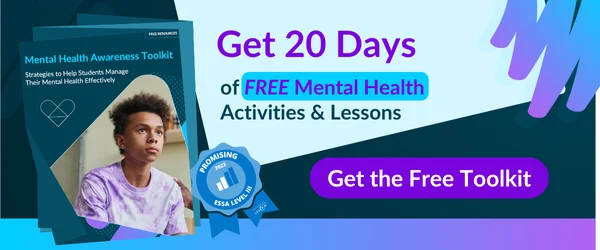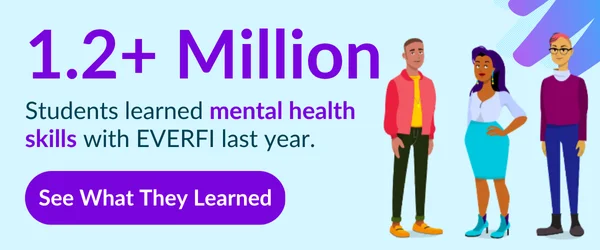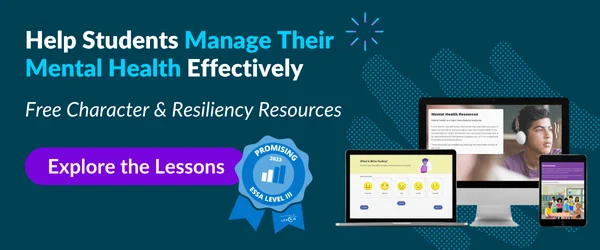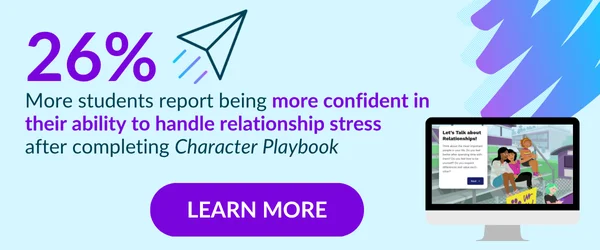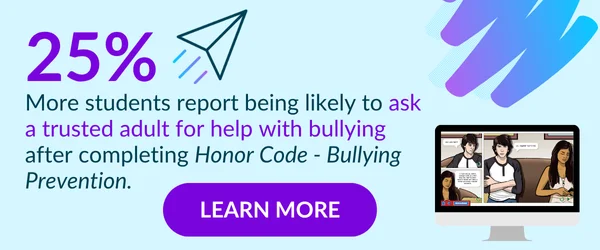Think about the way you empathize with an acquaintance, as opposed to a close friend, or even to a family member. Will you approach them the same way? Science says “no.” According to Psychologists Daniel Goleman and Paul Ekma, there are three different kinds of empathy: Cognitive Empathy, Emotional Empathy, and Compassionate Empathy. While they all rely on the same foundations (understanding another’s perspective), they differ in their depth.
Not all situations call for the same kind of empathy. Understanding this can help students better understand the nuances of empathy and how to navigate them. It can also help teachers understand the best approach for teaching empathy activities in their classroom.
Cognitive Empathy Activities
Cognitive Empathy is the ability to understand how another person thinks and feels. You may not necessarily have felt those same emotions before, but you can understand them. When you know what others are feeling, and you understand what they need or want, that can lead to showing compassion. Educators can teach cognitive empathy in a variety of ways:
Elementary School: Everfi provides free SEL curriculums for elementary school students. Show students the animated video, Try, Tye, Again from The Compassion Project to help younger students visualize empathy. Then use the online Lesson 2, “EmpathEyes” available at no cost on the Everfi platform to give students the opportunity to practice applying the concept in real life scenarios. Afterward, have students get into pairs and use the How Do You Feel? flashcards from the offline lesson plan for Lesson 2 (always available for download in your Everfi teacher dashboard).
One teacher said The Compassion Project “helps teach my students the concept of empathy,” (San Diego Unified, California).
Middle School: Have students consider what their social world looks like now through a mind-mapping exercise, and then ask them to consider their goals for the future. Guide them through “Relationships” (Lesson 1) from Honor Code, available at no cost on the Everfi platform. Ask students to theorize about how their social networks are built and interconnected. Do a “Notes of Kindness” activity, and have students anonymously leave positive notes for others.
High School: Have students explore the impact of self-talk in Understanding Mental Wellness “Healthy Coping Skills”, available in the Everfi platform. Then have students work to reframe the negative self-talk scenarios (provided in the Offline Lessons, available in your teacher dashboard). Help students reflect on how the variations affect their emotions.
A student from British Columbia shared their thoughts following the course, “I enjoyed the Mental Health Awareness course. I hear a lot about Mental Health in the news but never knew what it was about. I now have a good understanding about it and can try to help people when faced it.”
Emotional Empathy Activities
Emotional Empathy is the ability to relate to the emotions of another person. Emotional empathy means you are really sharing the emotions of another, and can be the basis for deep emotional connections. Teaching empathy to students can look like the following:
Elementary School: Show students Squeaky Wheel, a short animated film from The Compassion Project, to illustrate the impact of hurt feelings on emotions. Do an emotional pantomime activity as a class to help students better identify emotions. Show an additional video, Too Many Cooks, to continue the discussion around hurt feelings. If you have time, split students into groups and have them write and perform skits in groups. More information can be found in the Offline Lesson Plans for The Compassion Project, on emotions & on self-care. All materials are available in the Everfi platform.
Middle School: Have students complete Understanding and Managing Emotions from Character Playbook. Afterward, have students think-pair-share to reflect on a time they’ve felt their emotions were misunderstood. Students can then break into groups and play emotional charades by acting out different emotions for their team to guess. Wrap up the lesson with a group discussion that’s already outlined for you and found in your Everfi teacher platform. Teachers find that students appreciate the chance to work through real-life scenarios that they face regularly.
“Students loved the scenarios and working through real-life problems.” Teacher, Gaston County Schools, North Carolina
High School: Consider having students go through the five lessons in
Honor Code. With that foundation for healthy relationships laid, engage students in a capstone project aimed at positively impacting school culture. Gather your group of students and guide them through conducting a school survey, interpreting those results, brainstorming ways to make positive change, developing a plan, and evaluating its efficacy. It’s all laid out for them, to help empower them to become change-makers in their community.
One teacher in Louisiana shared her thoughts on the program saying, “I like the relevance of the content. The courses provide information that is not dated and the students can relate to the content. I have looked for other sources of quality character lessons and I have not been able to find any other resources that compare to Everfi.”
Compassionate Empathy
Compassionate Empathy is an empathy deep enough that it spurs the empath to take action on behalf of another. To teach compassionate empathy, try the following
Elementary School: Show students the animated video The Show Must Go On from The Compassion Project to help students explore signs of when someone needs to be shown compassion. Provide students with compassion BINGO boards (available in the offline activities ), and have them look out for opportunities to be compassionate throughout the week. Read Shelter by Celine Claire as a class and create a compassion tree by having students write ways to show compassion on paper leaves and posting the entire class’s leaves on a paper trunk.
“It helps my kiddos to realize there is always someone who needs to be treated the way they want to be treated. They just have to take the first step.” Teacher, Tennessee
Middle School: Have students complete “Stepping In” (digital lesson 5) from Character Playbook through everfi.net to provide some context and build foundational knowledge for the activity. Cover the five steps to positively intervene in a situation —
- Notice event
- Identify as serious
- Talk to others
- Decide how to act
- Help
Then break students into groups and pose a scenario (provided in the offline lessons of Character Playbook) for them to respond to.
A teacher in Arizona shared that Character Playbook “teaches students how to respond when they are faced with confrontation.”
High School: Discuss problems students have experienced in small and large groups – have people guess how those problems may feel and ask students to verify. Have your students complete “Career Success” from Keys to Your Future. Return to the problem list and crowd-source solutions to student problems.
A teacher from Oconee County in South Carolina mentioned that she loved “being able to help students better understand themselves and their college options.”
The role of a teacher goes beyond academics, often teaching students the essential life skills they need to be successful, happy adults. These activities are a great way to differentiate forms of empathy with students, regardless of their age. While this content doesn’t neatly fit into a curricular subject, it is hugely important to develop students’ understanding of empathy and the benefits are immediately seen in classroom culture.
All of the resources mentioned above are totally free to use, thanks to local and national sponsors. Set up your free teacher account to explore the resources further.

Samantha du Preez
Sr. Manager of Community Engagement in Detroit, MI
Autor: Samantha is a Sr. Manager of Community Engagement in Detroit, MI. She is passionate about education, good food, and the arts. She is a connoisseur of fine hobbies and can usually be found creating or playing with her dog, Mr. Darcy.
Free for K-12 Educators
Thanks to partners, we provide our digital platform, training, and support at no cost.
See why 50K schools use Everfi.

